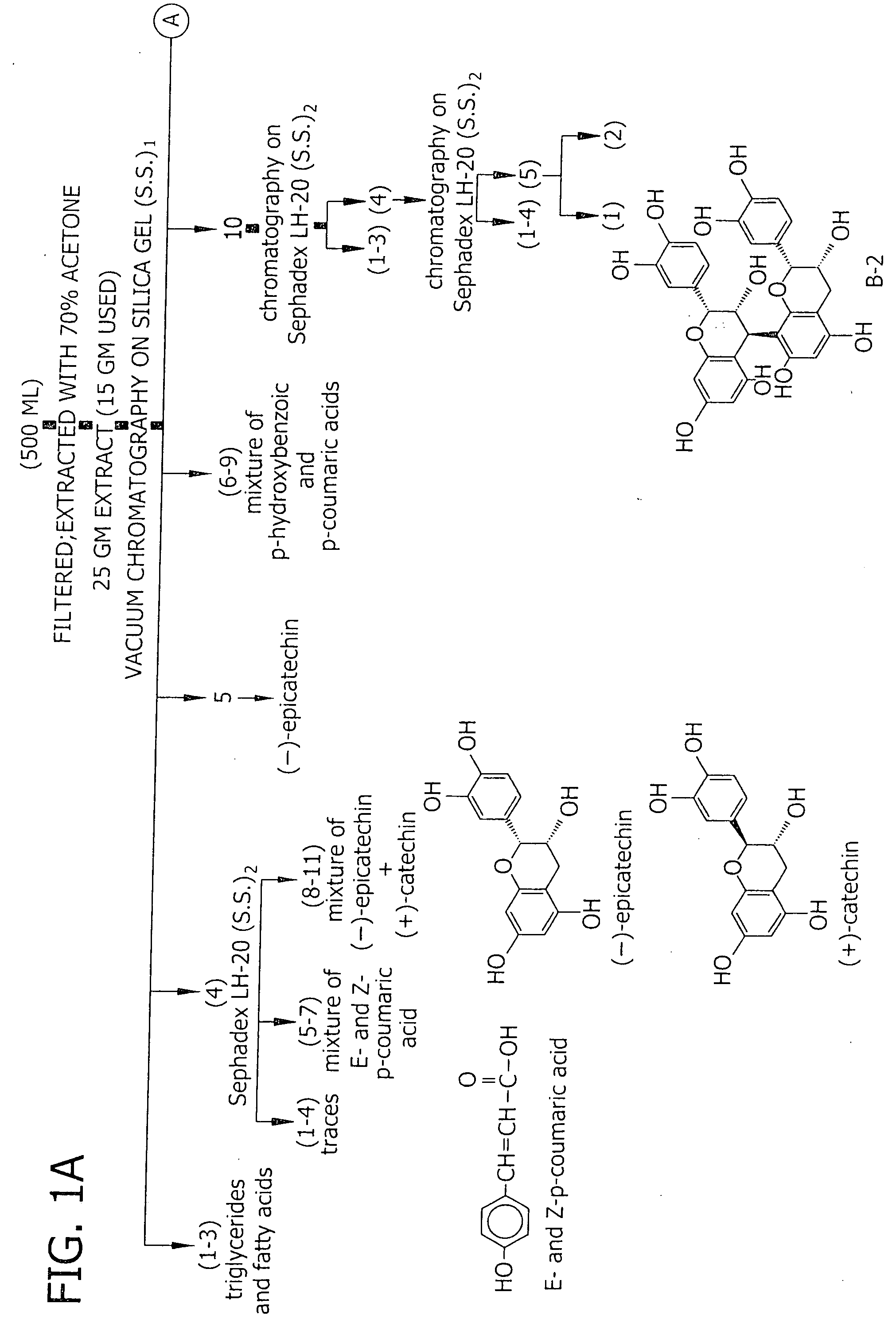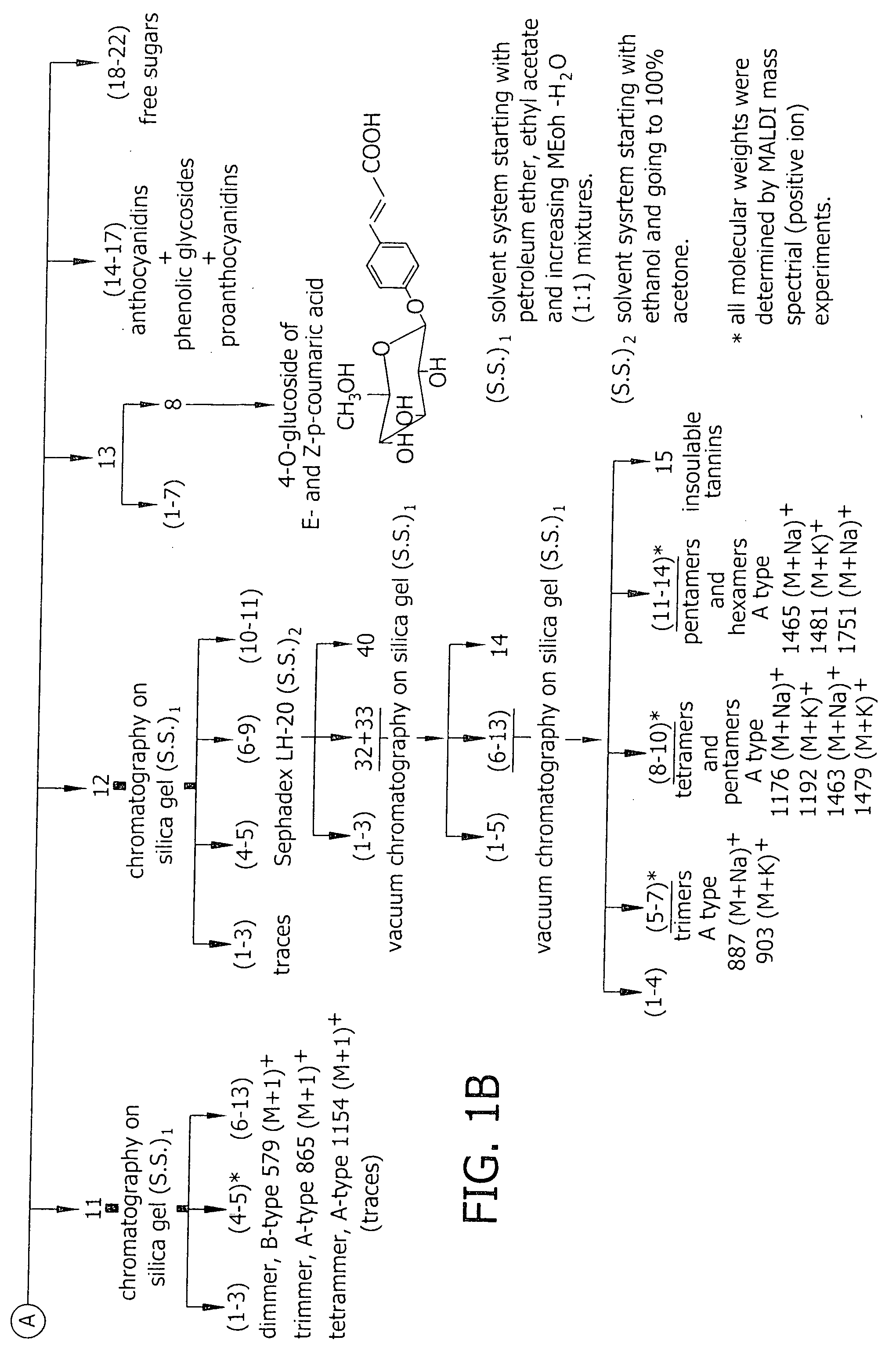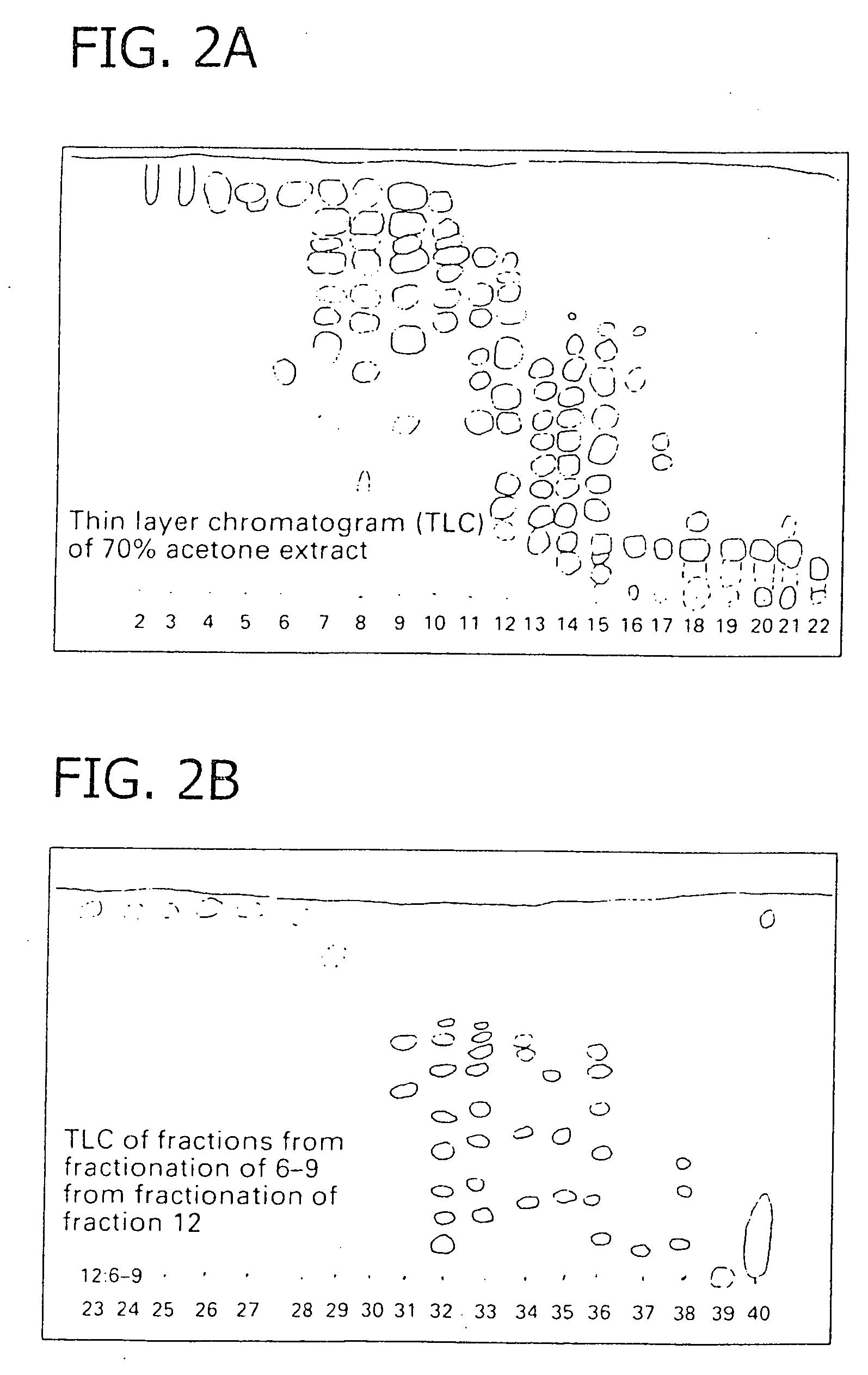Methods for isolation of proanthocyanidins from flavonoid-producing cell culture
a technology of proanthocyanidins and cell cultures, applied in the field of isolating proanthocyanidins from flavonoid-producing cell cultures, can solve the problems of slow progress in understanding the biology of these important compounds, the content of proanthocyanidins is increased, and the anti-oxidant capacity is increased, so as to achieve the effect of increasing the content of proanthocyanidins and increasing the anti-oxidant capacity
- Summary
- Abstract
- Description
- Claims
- Application Information
AI Technical Summary
Benefits of technology
Problems solved by technology
Method used
Image
Examples
example 1
[0075] Extraction and Fractionation of Proanthocyanidins. Callus and suspension cultures were initiated from stable, continuous shoot microcultures of V. pahalae according to protocols established by Smith et al. (1997). Uniform, unpigmented suspensions were maintained by routinely transferring 3.5 ml packed cell volume to 80 ml fresh maintenance suspension medium in 250 ml flasks, at 7 d intervals, and incubating on a rotary shaker at 150 ml rpm in the dark. The suspension medium was composed of Woody Plant Medium major and minor salts (Lloyd and McCown, 1980), rose vitamins (Rogers and Smith, 1992), and 30 g l−1 sucrose, 0.1 g l−1 polyvinylpyrrolidone, 4.5 μM 2,4-dichloroacteic acid (2,4-D), 5.4 μM naphthaleneacetic acid, and 4.6 μM kinetin.
[0076] Pigmented suspension cultures were established by transferring 4.0-6.0 ml packed cell volume from dark-incubated cell suspensions into 35 ml of color-induction suspension medium in 125 ml flasks, and incubating under 100 μmol −2 s−1 irr...
example 2
[0090] Galvinoxyl free radical quenching assay. An antioxidant assay originally reported by Smith and Hargis (1985) was adapted for examination of phenolic antioxidants (see Smith et al., 2000). Galvinoxyl, a stable free radical, was obtained from Sigma. All solvents, including water, were glass-distilled. A solution of galvinoxyl in methanol was prepared that had an initial absorbance of 1.8-2.0 OD at 429 nm. As the compound slowly reacts with oxygen, or is reduced via electron transfer, the chromophore is lost and its absorbance decreases. The loss of absorbance was monitored over time to give a rate constant for reactivity with a good electron donor (the reaction with oxygen is extremely slow, but is always monitored as a control value to ensure that rapid absorbance loss is due to the added antioxidant). Quenching of the galvinoxyl radical was recorded for 5 minutes at 30 s intervals using a Beckman DU 7400 spectrophotometer with a scan rate of 0.5 s. Aliquots of extracts from c...
PUM
| Property | Measurement | Unit |
|---|---|---|
| volume | aaaaa | aaaaa |
| volumes | aaaaa | aaaaa |
| volume | aaaaa | aaaaa |
Abstract
Description
Claims
Application Information
 Login to View More
Login to View More - R&D
- Intellectual Property
- Life Sciences
- Materials
- Tech Scout
- Unparalleled Data Quality
- Higher Quality Content
- 60% Fewer Hallucinations
Browse by: Latest US Patents, China's latest patents, Technical Efficacy Thesaurus, Application Domain, Technology Topic, Popular Technical Reports.
© 2025 PatSnap. All rights reserved.Legal|Privacy policy|Modern Slavery Act Transparency Statement|Sitemap|About US| Contact US: help@patsnap.com



